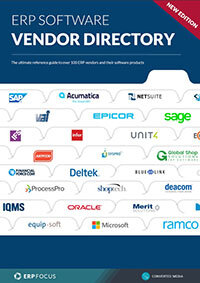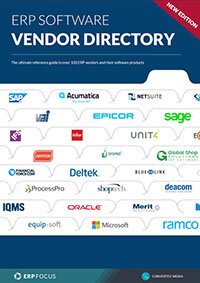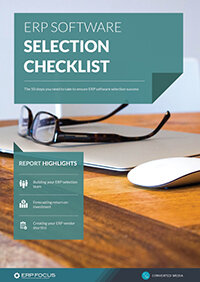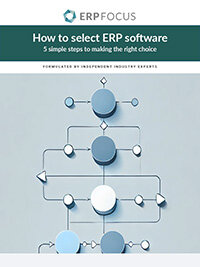ERP and cryptocurrencies - where do we stand?
During the last year or so, various news events relating to nextgen mediums of exchange called cryptocurrencies have become relevant to commercial operations. While many assume that these processes have little to do with ERP, this assertion is untrue, since underlying technologies associated with the crypto model offers a host of business values, particularly when they come to securing globalized financial transactions and future-proofing at large.
Consequently, since ERP platforms are evolving to include more transaction-based processes, we thought we’d take a look at cryptocurrencies and how they might apply to the development of future ERP systems. To begin, let’s define what crypto does versus today’s real world.
What cryptosystems do, and don’t offer
According to Investopedia, cryptocurrency is defined as; “…a virtualized medium of exchange that utilizes cryptographic characteristics to ensure transaction security. At a practical level, this definition means that individual or clustered transactions referred to as ‘exchange tokens’ are not created, issued or managed by formal, and/or centralized authorities, thereby rendering those transactions theoretically immune to interference from outside manipulation.”
Now, what does that mean to the ERP operator? Consider the sale and purchase of a simple widget sold by an online outlet for example. In pro forma terms, a typical legacy transaction loop looks like this;
1. The customer identifies a specific widget at a specific online widget store.
2. Customer contacts outlet, and executes a ‘tokenized’ order calling for a virtual purchase.
3. Outlet’s financial system acknowledges the purchase request and waits for a virtual sale authorization executed by the customer.
4. Customer executes a virtual transaction in order to complete the sale by means of a bank card number, or other transaction system such as a PayPal, or alternatively digitized cash value account.
Now, this is where things begin to get interesting from a transaction security management perspective.
5. In the case of the Bank Card purchase; the customer’s identification card is bound directly to an account number, which is identified but not necessarily owned by a local bank operator. Virtually, this account card number is instead, owned and managed by a larger financial services provider, which may, or may not be physically located in the customer’s town or state.
6. Meanwhile, on the ‘widget outlet side’ of the transaction, the inbound sale request is first received and handled by a merchant card system which is, in turn, validated and directed to a host entity, i.e. the financial services provider. This information is further validated, and if everything is acceptable, the transaction is redirected to a virtually localized account number associated with the widget company. In simple terms, this ultimately closes the transaction process, by creating a local credit on the widget company’s AR ledger.
Legacy versus crypto
Now, let's think about the security implications of the previous transaction chain for a minute. On the customer execution side alone, the process involves multiple elements including; delivery of the customer’s specific card number, the merchant card platform itself, and the at-large financial services system, all the while, being identified as a virtual account number broadcasting the widget company’s bank information. Any or all of these transaction validation points are potential hack points, ranging from straightforward attacks on any individual component within the transaction chain, to the entire chain itself, thereby creating the potential of even more damage, should a bad guy get well inside the widget company’s financial envelope.
However, in the case of cryptocurrency processing, transaction points only occur anonymously and only between buyer and seller, while everything in the middle is largely invisible to the virtual or physical eye. This has to do with cryptocurrencies underlying blockchain technology, but suffice that it’s application cloaks everything throughout the transaction chain, thereby rendering previous security concerns largely obsolete.
As suggested earlier, as a systems variant, ERP is regularly integrating more sophisticated processes to the degree that its use is becoming critical to any and all enterprise operations. Consequently, and congruent with continually emergent concerns about transaction security, it also would seem logical that crypto-based processes should become more useful to ERP’s growth in the near-future.
Free white paper

ERP Software Vendor Directory
Put the most comprehensive ERP vendor directory on your desk today

Featured white papers
-

60-Step ERP Selection Checklist
Get the comprehensive checklist for your ERP selection project
Download -

70 features to look for in your next ERP
A comprehensive guide to help you identify requirements for your ERP selection
Download -

How to Select ERP
Learn to select your ERP in 5 easy steps by following our expert's advice
Download
Related articles
-

Top benefits of ERP inventory management
How an ERP helps inventory management including four key advatages
-

Secret KPI: Why Your ERP Implementation Team Matters More Than Software
Learn how Godlan ensures successful ERP implementation for manufacturers with proven strategies &...
-

Intelligent ERP systems: What AI can (and can’t) do
What AI in ERP really means for buyers in 2025

